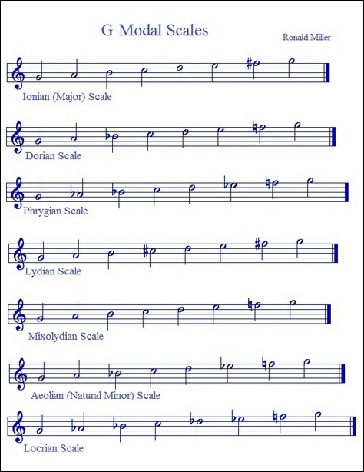





Session Three: Vibrational Use of Key and Scale
Modes
Modes are used in many types of music; from sacred music to jazz to rock. Composers use it to add "flavor" to their compositions in order to avoid predictability. It is formed by naming a different note as the root (1st) instead of the original root of the scale. Thus, in a way, modes can be defined as displaced major scales.
Each mode has a very distinct sound; for example, the Phrygian mode sounds melancholy and reflects the music of Spain. The Lydian mode sounds happy and is often used in jazz and rock music. The Mixolydian mode evokes a bluesy sound and can often be heard in jazz, blues and rock music. The Locrian mode, on the other hand, has a very strange sound but is rarely used.
The examples below show the 6 modes with their”formulas” in either whole or half steps or as the major scale with flats (b) or sharps (#). Each of these forms can be used in any key. Listen to the sound samples in the player at the bottom right. Sustain a C major chord under each as you listen to the mode played over it. Then check out the link below that explains how to apply this information to healing music specifically.
Dorian Mode W-
Aeolian Mode W-
Locrian Mode H-
Mixolydian Mode W-
Lydian Mode W-
Phrygian Mode H-







All the modes notated in the key of G.
Session 1 l Session 2 l Session 3 l Session 4 l Session 5 l Session 6 l Session 7 l Session 8 l Session 9 l Session 10 l Session 11 l Session 12

